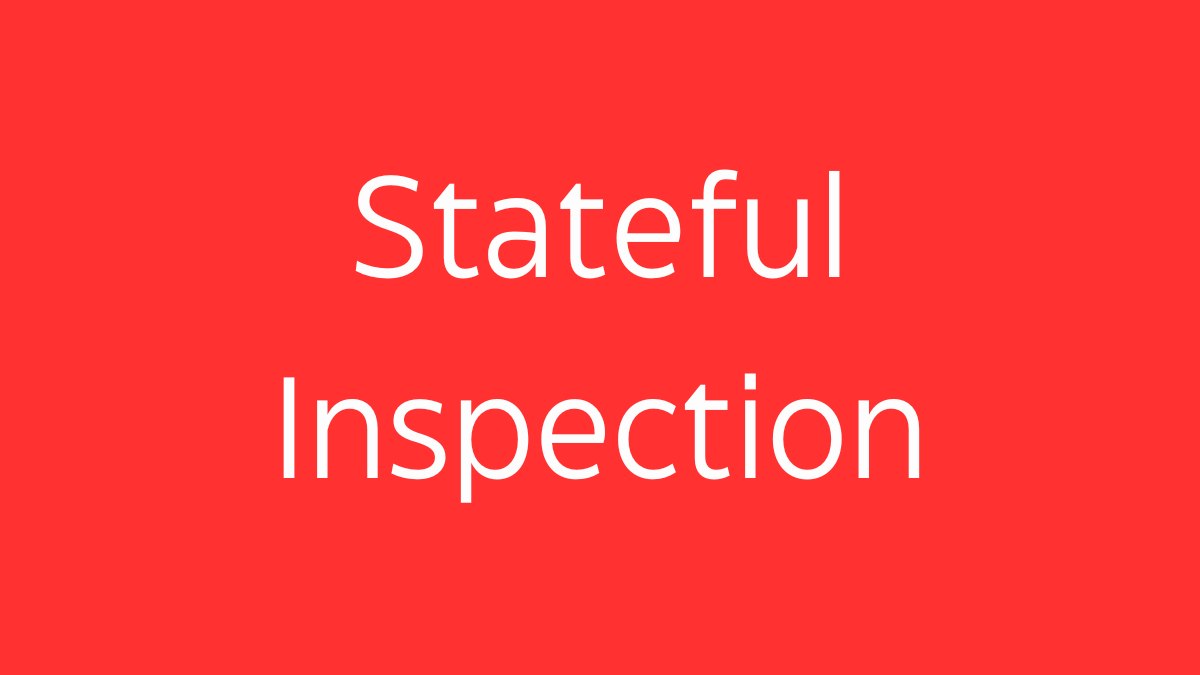Stateful inspection, also known as dynamic packet filtering, is a firewall technology that monitors the state of active connections and makes decisions about which network packets to allow or block based on the context of the traffic. Unlike simple packet filtering, which examines packets in isolation, stateful inspection considers the state of the entire network connection, such as TCP streams, and the expected packet sequence. This approach enhances security by allowing the firewall to understand and enforce rules based on the connection state.
Key Concepts:
- Connection State: Stateful firewalls track the state of network connections, such as whether a connection is new, established, or related to an existing connection. This enables the firewall to allow or deny packets based on the connection’s context.
- State Table: The firewall maintains a state table that records information about active connections, such as the source and destination IP addresses, ports, and sequence numbers. Each entry in the state table corresponds to a connection that the firewall is monitoring.
- Dynamic Rules: Stateful inspection firewalls dynamically create rules for return traffic. For example, if an internal device initiates a TCP connection to an external server, the firewall will allow the response packets from the server based on the existing connection state.
How Stateful Inspection Works:
- Packet Inspection: When a packet arrives at the firewall, it checks the packet against its state table.
- Stateful Decision: If the packet is part of an existing, tracked connection, it is allowed through. If it is a new connection attempt, the firewall applies its rules to decide whether to allow or block the connection.
- State Table Update: If the firewall allows a new connection, it creates an entry in the state table to track the connection. As more packets for this connection are processed, the firewall updates the state table with relevant information.
- Connection Termination: Once the connection is terminated (e.g., the TCP connection is closed), the firewall removes the entry from the state table.
Example Scenario:
Imagine a stateful firewall protecting a corporate network. When an employee sends an HTTP request to a web server on the internet:
- Outbound Request: The firewall detects the outgoing HTTP request, checks it against its rules, and allows it if permitted. It also creates an entry in the state table for this connection.
- Incoming Response: When the web server responds with an HTTP reply, the firewall checks the incoming packet. Because this response is part of an established connection (recorded in the state table), the firewall allows it through.
- Blocked Traffic: If a packet arrives that is not part of any existing connection (and doesn’t match any rules for new connections), the firewall blocks it.
Advantages of Stateful Inspection:
- Enhanced Security: By understanding the state of connections, stateful inspection firewalls can more effectively block malicious traffic, such as unsolicited incoming connections.
- Efficient Handling of Return Traffic: Since stateful firewalls automatically allow return traffic based on the state table, there is no need to write explicit rules for each direction of communication.
- Granular Control: Administrators can create rules based on connection states, allowing for more granular and dynamic security policies.
Comparison with Stateless Firewalls:
- Stateless Firewalls: Operate by examining each packet in isolation, without context or memory of previous packets. They rely solely on static rules and cannot dynamically allow or block traffic based on connection states.
- Stateful Firewalls: Track active connections and can make more informed decisions, reducing the chances of allowing unwanted or malicious traffic.
Use Cases:
- Network Perimeter Security: Stateful inspection is commonly used in firewalls that protect network perimeters, such as corporate gateways or data centers.
- Internal Network Segmentation: It can also be used to segment internal networks, allowing more precise control over traffic between different parts of a network.
Tools and Technologies:
- iptables with conntrack: In Linux, stateful inspection can be implemented using
iptablesin conjunction with theconntrackmodule, which tracks connection states.
sudo iptables -A INPUT -m conntrack --ctstate ESTABLISHED,RELATED -j ACCEPTThis rule allows incoming packets that are part of established or related connections.
- Commercial Firewalls: Many enterprise-grade firewalls, such as those from Cisco, Palo Alto Networks, and Check Point, use stateful inspection as a fundamental component of their security architectures.
Stateful inspection provides a robust and dynamic approach to firewall management, offering a higher level of security than simple packet filtering by tracking the state of network connections and making context-aware decisions.

